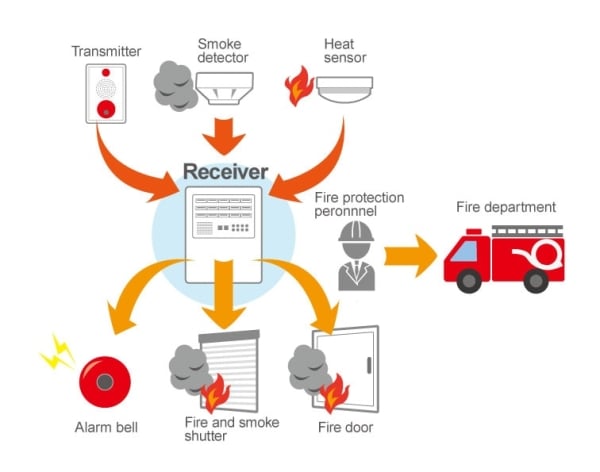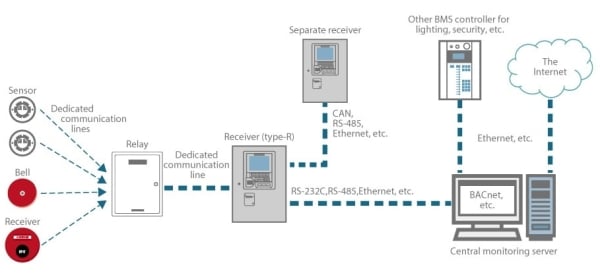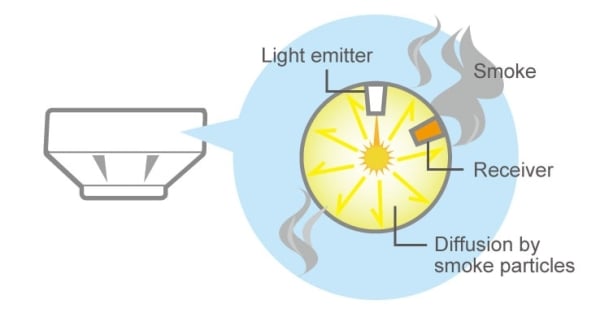In the context of building automation, fire and safety systems are designed to detect the outbreak of fires and provide warnings, for example by sounding alarm bells throughout the building. An automatic fire alarm system for buildings has a receiver that detects when one of the sensors connected by wires is triggered by a fire. The system then alerts the building occupants by sounding alarm bells or voice alarms throughout the building. Fire alarms used in buildings and in homes employ the same sensing methods, but they differ in that building systems are connected to networks while home systems are independent and sound the alarm individually. The figure below illustrates examples of sensing and notification types.
Automatic Fire Alarm Systems
An automatic fire alarm system comprises a receiver, automatic sensors, manual transmitters, sound devices, fire doors, fire shutters, smoke shutters, and network devices to which they are connected.
The receiver is installed in a fire protection center or management office within the building. It receives signals from the sensors if a fire breaks out, and controls such things as the display of indications of where the outbreak occurred and the sounding of audible alarms such as bells or voice messages. The receiver also supplies power to the system as a whole. It normally operates on the AC 100V power supply, but it is equipped with a backup power supply in case of a power failure. Receivers are classified into two types: P and R. Figure below shows an example type-R receiver and peripheral system.
The automatic sensors are installed in the various alarm zones throughout the building. They automatically detect the outbreak of fire from the heat, smoke, or flame, and send a signal to the receiver. The figure below shows a photoelectric spot sensor for detecting smoke. When smoke enters the sensor, the light emitted by the emitter (LED) is diffused by the smoke particles, and this is detected by the receiver.
The sound devices are installed in various locations throughout the building. These emergency alarm units sound a bell or a voice warning when they receive a signal from the receiver. Each of these devices is connected to the network via a wired or wireless communication system. Wired networks use the RS-485 data transfer standard over dedicated wires, and wireless networks use the 420MHz band, Bluetooth® Low Energy (LE), or Sub-GHz band, among others.



